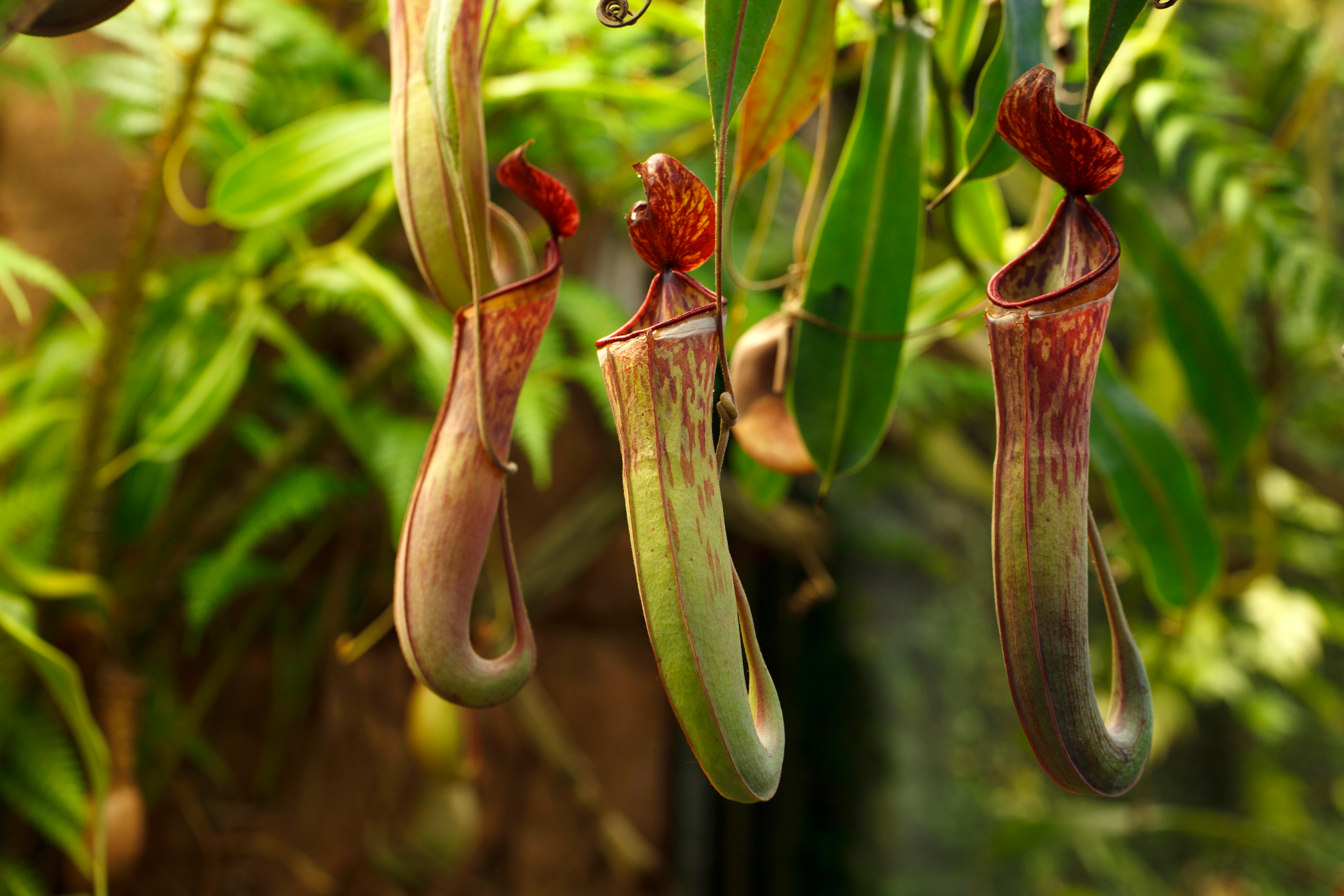Narrow-leaved pitcher-plant
(Nepenthes stenophylla)

Description
Nepenthes stenophylla is a tropical pitcher plant endemic to Borneo. The species produces attractive funnel-shaped pitchers up to 25 cm high. It is listed as Least Concern on the IUCN Red List. Nepenthes stenophylla belongs to the loosely defined "N. maxima complex", which also includes, among other species, N. boschiana, N. chaniana, N. epiphytica, N. eymae, N. faizaliana, N. fusca, N. klossii, N. maxima, N. platychila, and N. vogelii. There has been confusion surrounding N. stenophylla and N. fallax ever since the latter was first described. Nepenthes fallax matches N. stenophylla in most respects, except for the shape of the lid; the type specimen of N. fallax has an orbiculate lid, whereas that of N. stenophylla is narrow. However, the original description of N. stenophylla was based on a plant raised from seed in a greenhouse in England, and the narrow shape of the lid could be an aberrant characteristic resulting from artificial growing conditions. In his seminal monograph "The Nepenthaceae of the Netherlands Indies", B. H. Danser treated N. fallax as a heterotypic synonym of N. stenophylla. This interpretation has been supported by most subsequent authors. Jan Schlauer, however, considers the taxa as two separate species based on the shape of the lid. He suspects the taxon originally named as N. stenophylla may have later been named again as N. faizaliana. Nepenthes fallax has a separate conservation status of Vulnerable on the IUCN Red List. Nepenthes is a genus of carnivorous plants, also known as tropical pitcher plants, or monkey cups, in the monotypic family Nepenthaceae. The genus comprises about 170 species, and numerous natural and many cultivated hybrids. They are mostly liana-forming plants of the Old World tropics, ranging from South China, Indonesia, Malaysia, and the Philippines; westward to Madagascar (two species) and the Seychelles (one); southward to Australia (four) and New Caledonia (one); and northward to India (one) and Sri Lanka (one). The greatest diversity occurs on Borneo, Sumatra, and the Philippines, with many endemic species. Many are plants of hot, humid, lowland areas, but the majority are tropical montane plants, receiving warm days but cool to cold, humid nights year round. A few are considered tropical alpine, with cool days and nights near freezing. The name "monkey cups" refers to the fact that monkeys were once thought to drink rainwater from the pitchers.
Taxonomic tree:







